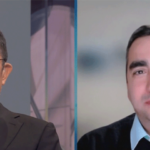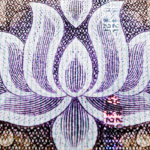What’s Ahead for China’s Currency?
A renminbi update with Jeffrey Qi of E Fund Asset Management

While China took a break in mid February to celebrate its annual Spring Festival, its currency, the renminbi (RMB), was making headlines around the world. Several high profile international investors publicly announced they were shorting the RMB due to perceived weakness in the currency. The argument for devaluation runs counter to our belief that the RMB will remain stable over the next year.
In order to put things in perspective we spoke with our partner Jeffrey Qi from E Fund Asset Management, one of the largest asset managers in China with $99 billion under management1. Mr. Qi is the portfolio manager for the KraneShares E Fund China Commercial Paper ETF (ticker : KCNY). Below he shared his views on the currency and recent headlines surrounding the RMB.
Brendan: First and foremost, welcome back from your break Jeffrey. Over the last week, there have been headlines concerning “capital flight” from China. Can you elaborate on this?
Jeffrey: The “capital flight” we witnessed was largely due to the renewal of an annual quota of USD $50,000 for Chinese retail investors to convert their money to foreign currencies. According to the regulation, quota is granted to individual Chinese citizens on an annual basis and is renewed on January 1st each year. We see a consistent annual uptick in outflows around January 1st due to this quota program.
Brendan: What do you say to those who believe China is weakening its currency to boost its exports abroad?
Jeffrey: We saw that the People’s Bank of China (PBoC), China’s central bank, allowed minor weakness in early January but has since kept the currency stable. Over the past year, we have seen a competitive depreciation from every major trading partner except the United States. This race to the bottom by our trading partners exceeded any positive influence on exports that real RMB devaluation would have generated. We do not believe the PBoC is interested in joining the so called “currency war”.
According to Zhou Xiaochuan, the head of the PBoC, in 2015 the goods trade surplus was U.S. $598 billion and net exports' contribution to GDP was healthy2. Therefore, we do not believe there is motivation for depreciation to boost net exports.
Brendan: As demand for Chinese manufactured goods diminishes in the U.S. and Europe, will the resulting oversupply of these goods have a negative impact on China’s economy?
Jeffrey: We believe the hard lessons learned during the Asian financial crisis of 1998 may help to mitigate this concern. During this time, weak demand from the U.S. and Europe led to an overcapacity in middle and lower end consumer goods, largely represented by the textiles industry.
In 1998, the excess capacity cuts were abrupt and dramatic, which led to corporate mergers and bankruptcy and subsequently higher unemployment. In the second half of 1998, the economic downturn accelerated, with real GDP growth falling from about 9% to 7%.
Since 1998, China has been pushing to raise domestic consumption in order to alleviate its dependency on foreign demand for its exports. While manufacturing is still very important to China’s economy, services now represent a greater portion of its GDP. The growth of services gives China more room to temper slackening demand for exports than it had in 1998. Today, any process geared toward cutting overcapacity will be more moderated and drawn out over an extended period of time. The government will continue to support the supply and demand side with management reforms, but they have learned from 1998 that drastic measures on overcapacity exacerbate bankruptcy issues and the problem of unemployment.
Brendan: The RMB short-sellers cite a rapid acceleration in credit growth as their primary motivation for shorting the currency. Do you feel there is a debt crisis looming?
Jeffrey: The figure many RMB short-sellers are using to support their theory is China’s debt to GDP ratio. By comparing what a country owes to what it produces, the debt-to-GDP ratio indicates the country's ability to pay back its debt. There is no official measure of aggregate debt in China and market estimates vary widely. The lack of official numbers makes it easy for short-sellers to grab headlines with trumped up estimates.
George Soros, one of the most vocal short-sellers of the RMB, suggested the debt to GDP ratio is at 350%. We prefer to use the ratio developed by London based economic research firm Capital Economics, they put the debt to GDP ratio at 230%. This figure is much lower than other developed economies including the U.S (248%), UK (261%) euro-zone (270%) and Japan (387%)3.
While by all measures the debt to GDP ratio has risen recently, the PBoC is currently pursuing a policy of monetary easing. Debt risks typically come to a head when policy is being tightened, not eased, because monetary tightening increases financing costs and makes it harder for borrowers to service their debt burdens.
For those interested in learning more about this issue, Capital Economics’ Julian Evans-Pritchard has recently published a thorough piece on the topic as part of their China Economics Focus series.
Brendan: How does monetary easing affect KCNY?
Jeffrey:Monetary easing policies have brought down rates in the onshore interbank bond market. Average lending rates have come down from 7.2% at the start of 2014 to 5.3% at the end of 20153. On the short end of the yield curve, where our fund focuses, the average six-month yield has fallen from 4.1% to 2.3%4. In the United States, the average six-month yield is 0.48%4. Even with monetary easing in place, we believe yields in the interbank bond market are still attractive compared to the U.S. and may remain attractive for the foreseeable future.
Brendan: Do you think we will see another period of volatility as we saw in early January?
Jeffrey: Despite recent volatility in the RMB, many would be surprised to see how well it has done historically versus major currencies, both developed and emerging. It was only recently when the U.S. Federal Reserve indicated that it might raise interest rates, and the PBoC moved to peg the value of the RMB to a basket of currencies rather than just the U.S. dollar, that we saw weakness in the RMB. The new basket approach to valuing the RMB may cause more divergence from the price of the dollar then we’ve seen in the past. Additionally, volatility could be exacerbated by negative sentiment on the currency caused by highly publicized shorts on the RMB. However, we believe it is unwise to bet against the RMB as China’s officials have demonstrated a willingness to keep the currency stable through tapping into their formidable $3.2-trillion dollar reserve pool5.
Not that we believe significant depletion of reserves will be necessary. In 1998 China's leadership injected capital into its economy through a number of different stimulus programs including, recapitalization of bonds, equity write offs, and tax credits. Additionally, to quote the head of the PBoC again, “the most important economic fundamental to consider when determining the direction of a country’s exchange rate is its current account balance”. As of 1/31/2016 China's current account balance shows the largest surplus of any other country in the world5.
Brendan: How do you think China’s slowing GDP growth rate might impact the currency?
Jeffrey: Even though China’s economic growth is slowing, it still outpaces every other major economy in the world at 6.9% year over year6. This will give the strongest support to the currency in the long run. We mentioned China’s trade surplus in 2015 was the highest ever4, which is another strong support for the currency. Last but not least, China’s local currency interest rates are higher than the U.S. as of 1/31/2015. The higher yields in China may deliver some protection against volatility in the currency.
We believe RMB still has space to appreciate in the long run. If interest rates fall in Europe and Japan, the RMB is apt to appreciate. If the US Federal Reserve delays interest rate hikes, it will further the potential for RMB appreciation. Additionally, when the RMB is officially included into the International Monetary Fund's Special Drawing Rights on October 1st 2016, there could be trillions of dollars of inflows into RMB denominated commercial paper by international central banks and asset managers. Based on our long-term bullish view on the currency, we believe short-term volatility may create a chance to take a position in the currency.
Brendan: Thank you for the update Jeffery. Your insights are very much appreciated. We look forward to our next conversation and will be sure to pass along any questions from our shareholders to you.
- Data from the Asset Management Association of China as of 06/30/2015
- "Transcript: Zhou Xiaochuan Interview", Caixin, 02/15/2016
- Julian Evans-Pritchard, “Credit risks rising but crisis not imminent”, Capital Economics, 02/11/2016
- Data from Bloomberg as of 12/31/2015
- Data from Bloomberg as of 01/31/2016
- Data from Bloomberg as of 12/31/2015. Major economies defined as G13 members


















